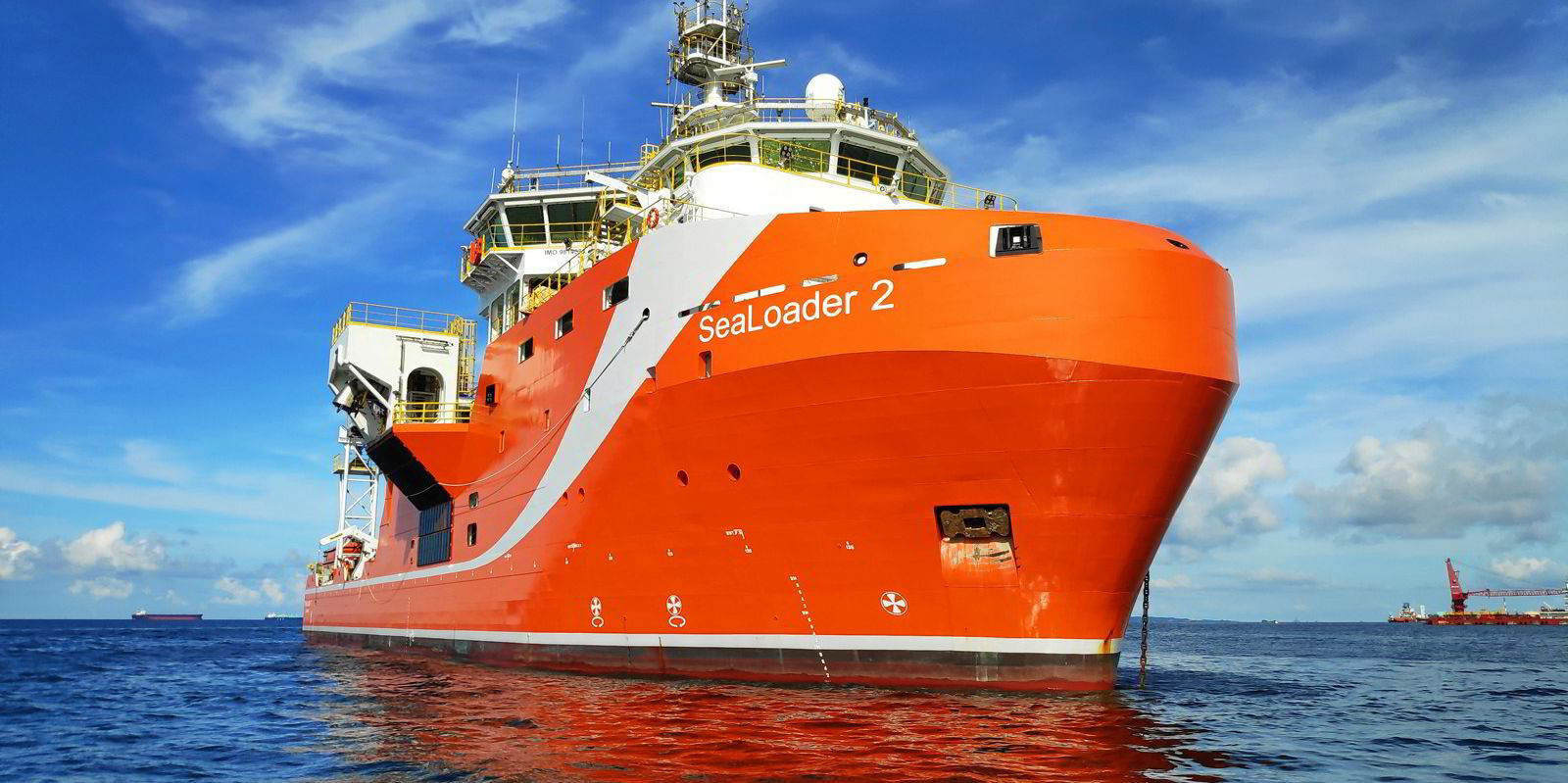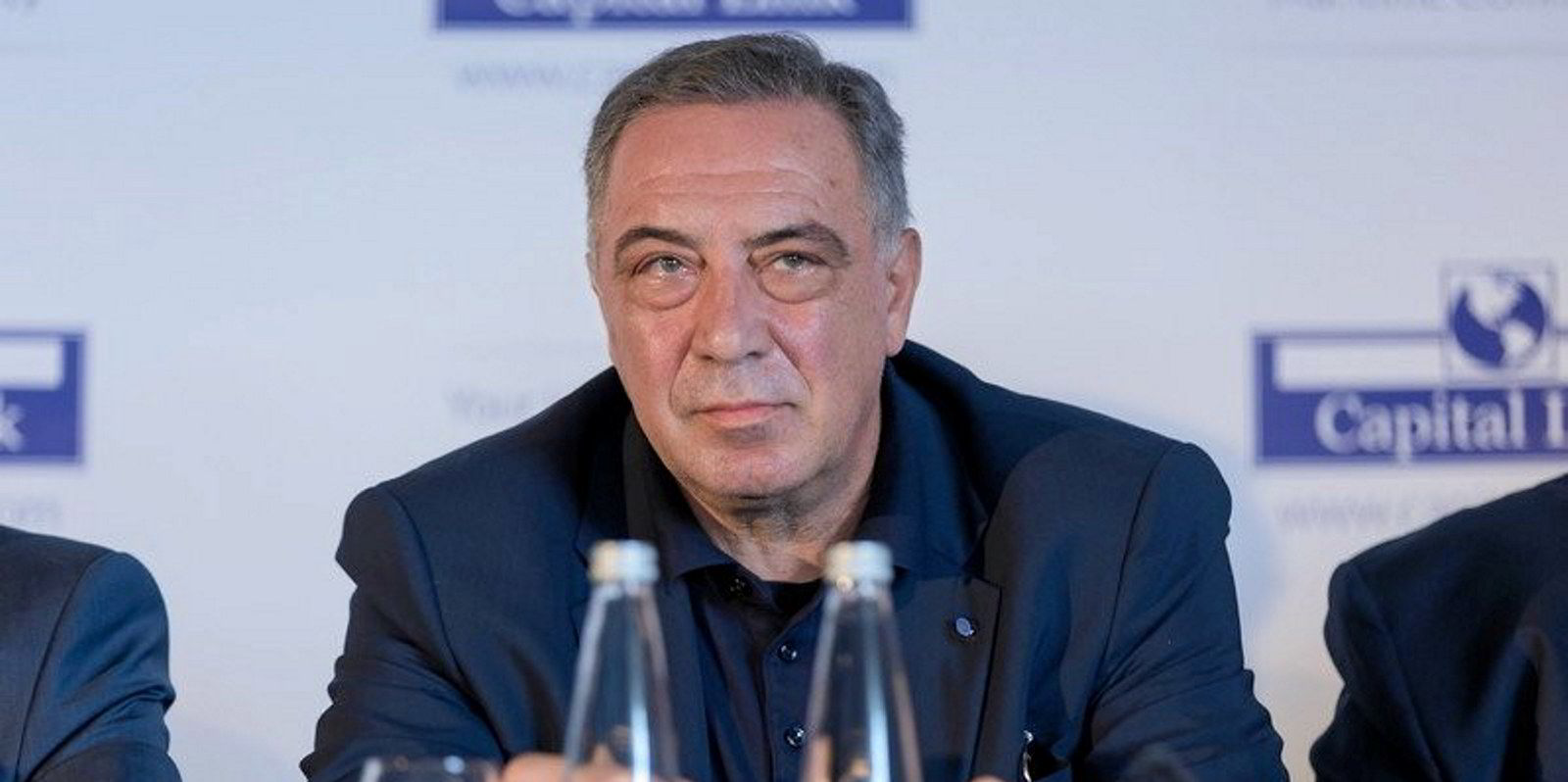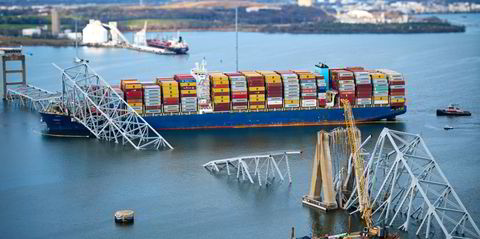Mitsui OSK Lines and Petrobras are teaming up to increase the use of a unique vessel design that could render shuttle tankers obsolete.
The Japanese owner’s Norwegian subsidiary Sealoading has chartered one of its two cargo transfer vessels (CTVs), the 6,500-gt Sealoader 2 (built 2019), to the Brazilian oil major after a successful trial.
The two companies will now start negotiations aimed at ordering a new CTV before the end of this year.
The partners claim using a CTV at oilfields reduces CO2 emissions and costs.
Crude produced offshore by a floating production, storage and offloading vessel is usually transported via shuttle tankers with special cargo-handling equipment.
They receive the oil and transport it to a storage terminal or calmer waters where it can be offloaded or transhipped, and then reloaded onto a conventional crude tanker.
In the case of a CTV, the crude oil can be directly loaded from the FPSO to the tanker by connecting a CTV between the two ships.
“This dramatically increases the efficiency of crude oil logistics,” the companies said.
There are only two CTVs in the world, both owned by Sealoading.
The Sealoader 2 began a trial with Petrobras in 2022 and successfully completed more than 30 offloading operations from an FPSO in the Santos basin.
The tests involved tankers up to VLCCs size.
Big emission reductions claimed
A time-charter contract began last year as a result.
MOL claims CTVs are expected to achieve a 60% reduction in CO2 emissions off the Brazilian coast, compared to using a shuttle tanker.
This could rise to about 80% off the coast of Uruguay.
“The MOL Group is strengthening its collaboration with Petrobras and other oil majors, with the aim of further spreading the use of CTVs in the future,” the owner said.
MOL acquired 100% of Sealoading’s shares in 2022 after buying a stake in 2019.
The Arendal-based company was founded by Arne Smedal and family members 10 years ago.
In 2021, TradeWinds reported that Sealoading was expecting earnings of around $65,000 per day for each CTV.
Sealoading was seeking investors to fund a fleet of four to six vessels within five years, and up to 20 by the end of the decade.
Sources said the Sealoader 1 was already on a five-year time charter to TotalEnergies.







